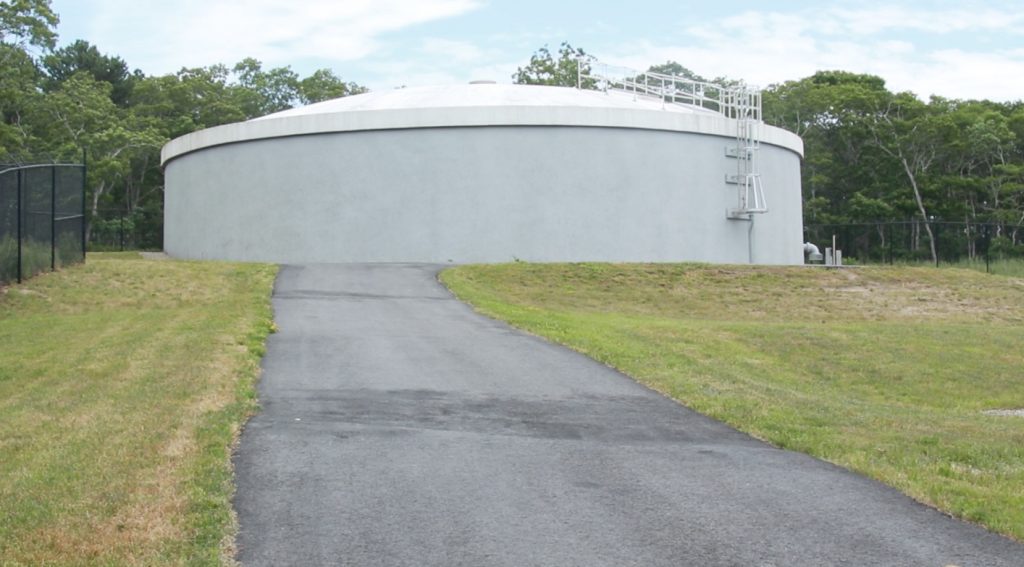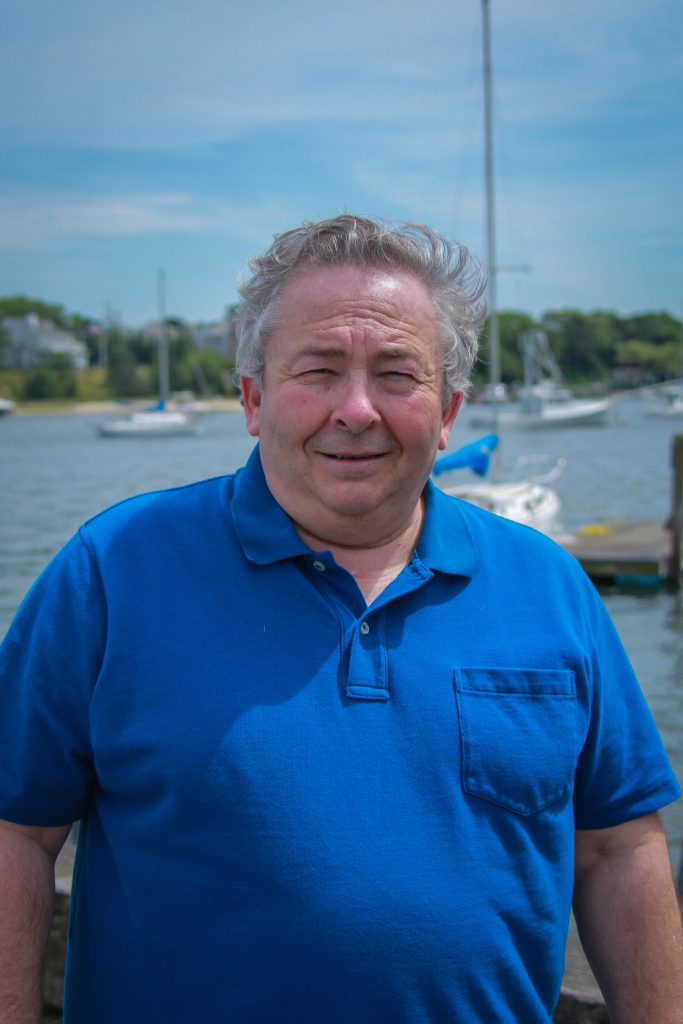Hyannis steps up response to water contamination

Experts say Cape Cod’s sandy soils make the groundwater especially susceptible to contamination, a factor in Hyannis’ recent contamination that resulted in a 2016 drinking water health advisory. (Photo by Rachel Konieczny/News21)
HYANNIS, Mass. – When Hyannis officials discovered that unacceptable levels of contaminants from firefighting foam had leaked into the city’s water supply, they took action.
Officials immediately provided cases of water to 18,000 residents of the Cape Cod community and spent $6 million to install an activated carbon filtration system. Now, they are cleaning the contamination site.
Phil Brown, a professor of sociology and health sciences at Northeastern University, praised the response after the city discovered the contamination in 2007.
“The local government has been incredibly responsive,” Brown said. “They’ve done their best to use a filtration system, to educate people and to come speak to public forums to help people understand that they are doing a lot working to shut down (contaminated) wells in the community.”
Brown leads the university’s Social Science Environmental Health Research Institute and recently worked with the Environmental Working Group, a national organization specializing in toxic chemicals research, to create a national interactive map that cross references the locations of public water systems with known per- and substance contamination. These substances, man-made and toxic to humans, prove difficult to remove from the environment and are found in a variety of stain-resistant, waterproof and non-stick products.
The map combines federal drinking water data with documented cases of per- and polyfluoroalkyl substance contamination from manufacturing plants, military air bases, civilian airports and fire training sites, according to the project’s website.
“A lot of (regulation) does have to be done at the local level because local water districts are where we’re measuring a lot of this,” Brown said. “We’re actually very pleased to see the level of interest by the local government.”
But some Hyannis residents hesitate to drink the tap water, which officials have deemed safe.
“After the whole Flint thing, I woke up one morning, and they said the Hyannis Water System is contaminated, too, so we have to lay off (the water) until they fix it,” resident Calvin Wiggins said.

Calvin Wiggins has lived in Hyannis, a community in Cape Cod, for 20 years. He buys bottled water for drinking because he doesn’t trust the water there. (Photo by Rachel Konieczny/News21)
Wiggins, who moved to Hyannis from Jamaica 20 years ago, said he continues to buy bottled water for drinking but uses the tap water for showering and washing dishes.
“It is a little expensive to buy bottled water. But at the same time, you’ve got to work it into your budget,” Wiggins said. “You’ve got to pay for the water anyway, so add a little more to it. I make sure I’m on the safer track.”
Wiggins said he moved to Hyannis to achieve economic prosperity. He relied on his tailoring experience in Jamaica and now owns and operates his own upholstery company while working as a part-time musician. Known as the “Capital of the Cape,” Hyannis leads Cape Cod’s commercial and transportation sectors while capitalizing on its summertime tourist industry.
Experts say Cape Cod’s sandy soils make the groundwater especially susceptible to contamination, a factor in Hyannis’ recent contamination that resulted in a 2016 drinking water health advisory.
“Cape Cod is a deposit of a glacier 15,000 years ago and basically comprised of sand outwash and a sandy deposit,” said Thomas Cambareri, director of water resources for the Cape Cod Commission. “It’s very porous, highly permeable sands that comprise Cape Cod.”
Cambareri, a hydrogeologist, said the county is trying to better understand the contamination and how to effectively clean it up.
The Silent Spring Institute first discovered these emerging contaminants on Cape Cod in 2009, but they didn’t reach unacceptable levels until the EPA raised its standards. The institute concluded the contamination in Hyannis came from aqueous film-forming foam, commonly used at military bases and firefighting academies. These findings helped researchers and officials determine the source of the contamination: the Barnstable County Fire and Rescue Training Academy.
Laurel Schaider, a research scientist at the Silent Spring Institute who has tested Hyannis water, said the contamination problem is twofold.
“When we talk about the firefighting foams getting into the wells, that’s related to environmental contamination. When the foams are used, they can run off into the soils and then ultimately percolate down into the groundwater,” Schaider said. “When we’re talking about household wastewater, we know that (per- and polyfluoroalkyl substances) are used in many household items, such as stain-resistant carpets, furniture and nonstick cookware.”
Brown said researchers have a long way to go.
“There is a lot of work that needs to be done in green chemistry to find chemical alternatives that are safer,” Brown said.
In addition to finding chemical alternatives, Hyannis is exploring other ways to help ensure residents are drinking safe water.
“One approach is the trend toward more municipal water supplies,” said Mark Forest, chairman of the Cape Cod Conservation District.
While less than 20 percent of residents rely on private wells, Forest said they can better ensure their safety by hooking up to the municipal water supply.
Forest praised the Cape’s advancements thus far, highlighting one development being tested at the Joint Base Cape Cod military site.

Mark Forest, chairman of the Cape Cod Conservation District, praised the response to water contamination in the area. (Photo by Rachel Konieczny/News21)
“One innovative way of dealing with this (contamination) is called permeable reactive walls,” Forest said. “What the wall does is it sort of intercepts pollution as it moves along the surface or just below the surface of groundwater.”
According to the EPA, the walls will be introduced once data from the military site has been collected and analyzed.
Barnstable County Administrator Jack Yunits, who oversees the fire training academy, said the academy stopped using the foam in 2007 after learning of its potential harm. The Centers for Disease Control and Prevention said studies have suggested that exposure could cause cancer and low birth weights in infants.
“Now we’re in the process of cleaning up the site,” Yunits said. “We’ve removed a lot of the contaminated soils, and we have a treatment system out there where we try to grab the water before it gets to the wells and run it back.”
Yunits said he hopes the federal government better regulates these emerging contaminants.
“I just wish they’d deal with it like they did with the Agent Orange problem and start to address people’s concerns,” Yunits said. “I don’t think (these contaminants are) going to be an epidemic of proportion that Agent Orange was if we control it. But if it starts to become a problem for mothers and kids, then we’ve got an issue.”
In June, Barnstable County agreed to pay the town of Barnstable $2.95 million for reimbursement associated with the contamination from the chemicals used in the firefighting foam at the academy. The town of Barnstable, Hyannis’ neighbor to its north, owns the academy. Both the town of Barnstable and the county have filed separate lawsuits against the foam manufacturers, including industrial giant 3M. The lawsuits are currently in federal court, Yunits said.